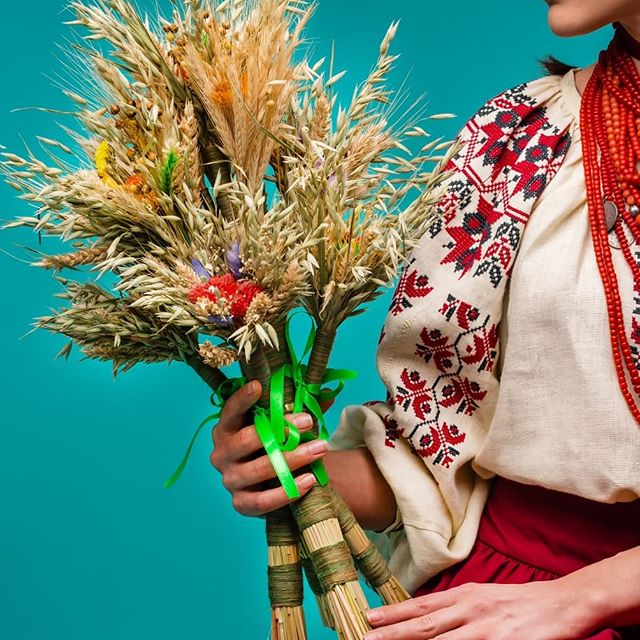Didukh is one of the most important symbols of Christmas for Ukrainians. It is a sheaf made from ears of wheat, rye, barley or oats, decorated with dried flowers, ribbons and other decorative elements. It symbolizes prosperity, harvest and connection with ancestors, writes WomanEL.
Didukh originates from pre-Christian times, when it was considered the personification of the spirit of ancestors. According to the ethnologist, Doctor of Historical Sciences of the B. Khmelnytskyi National University of Chernivtsi Andriy Temchenko, our ancestors initially left an uncut bundle of ears of wheat in the field, tying it with a red thread. This was called “Veles' beard” or “Spasov's beard”.
Thus, a symbiosis between Christian and pre-Christian traditions took place. The ear of corn left behind was considered a sacrifice to the God Veles, who connected the underworld of ancestors with the living. We bury our ancestors in the ground so that they could nourish the humus on which the crop grows with their bodies. Metaphorically, we consume the bodies of our ancestors, so the grain connects the past and the future,
the historian explains.
After the ears of corn ripened, the “beard” was cut off and used to create a sheaf, which was placed in the corner – a place of honor in the house.
In the Christian context, the didukh began to be perceived as a symbol of Jesus Christ – the “life-giving bread”. This amulet became an element of festive decor and family unity. Installing the didukh before Christmas Eve is a kind of ritual performed by the head of the house, saying: “Didukh to the house, trouble from the house”. The sheaf also symbolizes prosperity, material abundance and protection of the family.
 Grandfather Frost is a symbol of Christmas that unites generations of Ukrainians. Source: facebook.com/Treasures of Ukraine
Grandfather Frost is a symbol of Christmas that unites generations of Ukrainians. Source: facebook.com/Treasures of Ukraine
How to create a didukh
To create a didukh, you will need:
- a sheaf of wheat, rye, barley or oats;
- dried flowers (poppies, flax, calendula, daisies);
- decorative ribbons.
- Collect the ears of corn during the milky maturity period (late May – early June) to prevent the grain from falling off.
- Twist the main sheaf and secure it with thread or ribbon.
- Decorate with dried flowers and add decorative elements.
- Place the didukh in the corner until the end of the holidays.
After the holidays, it is usually burned, symbolizing freeing the souls of ancestors and cleansing the house from evil forces. Didukh is an echo of traditions that unite generations and remind us of the connection with the land and relatives.
We have also prepared step-by-step recipes for Christmas kutia.

